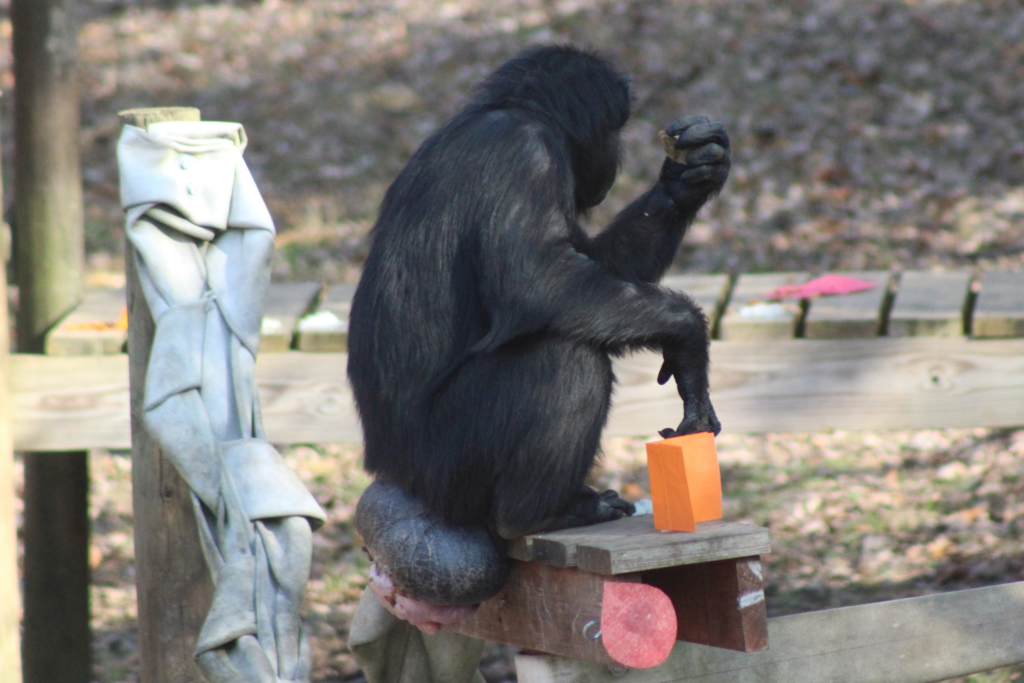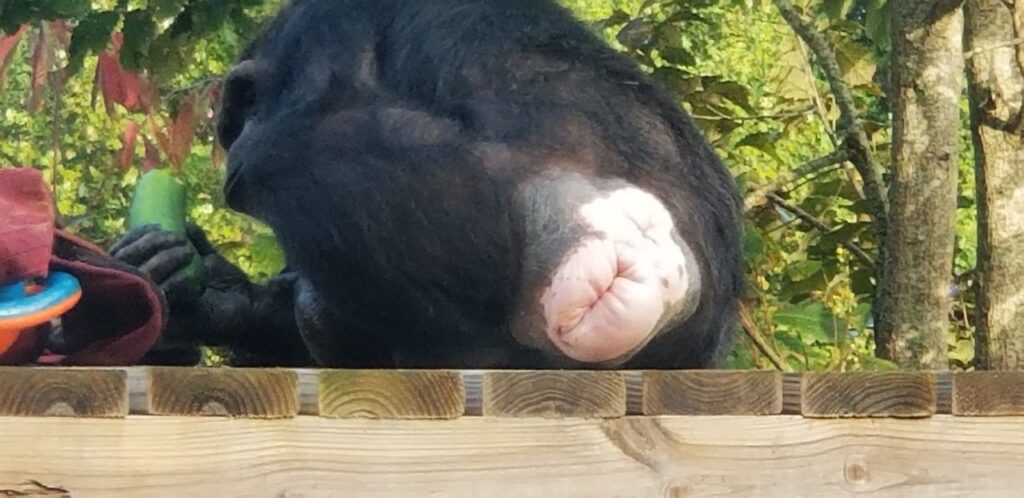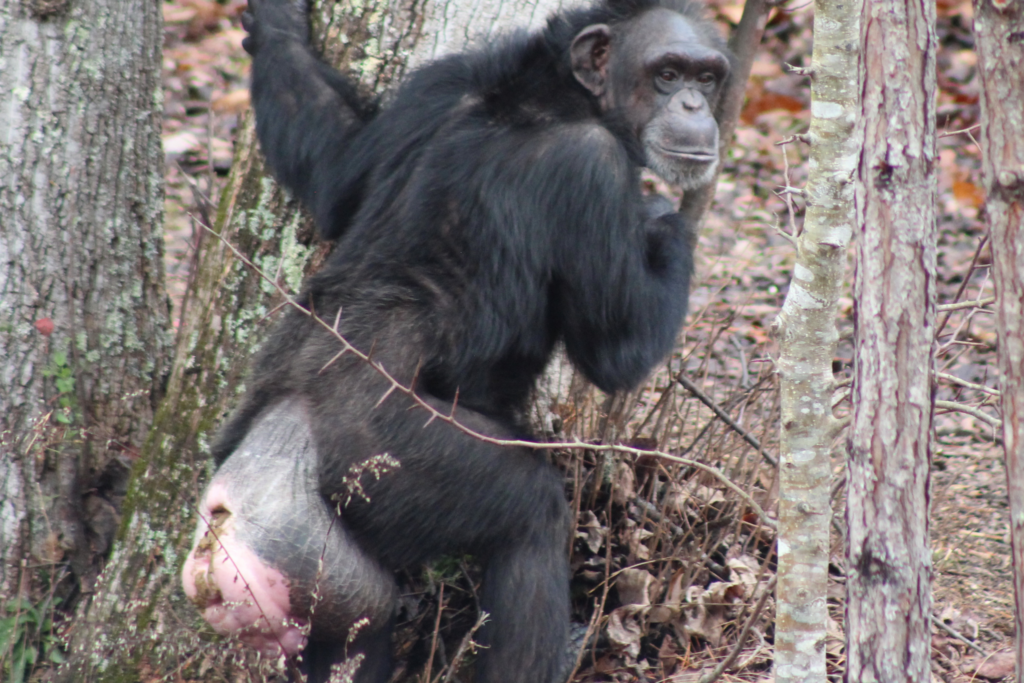
Chimpanzee Menstrual Cycles

By Kayla Adgate
Have you ever noticed that female chimpanzees seem to have a saggy bottom? That’s called a swelling and it’s an important part of their anatomy.
Swelling, Health, and Fertility
Although there is some conjecture regarding its exact function, scientists agree that chimp tumescence, or the process of swelling, and menstruation are physical indicators of a chimp’s fertility and overall health (Deschner et al. 204).
Normally, a chimp’s swelling is smooth and symmetrical. Some only swell a little for a short time, others get very swollen and can look uncomfortable. For example, caregivers at Project Chimps were quickly alerted to several of Latricia’s health conditions due to her uneven swelling.

Human and Chimp Menstrual Cycles
Just like human females, chimp menstrual cycles vary from chimp to chimp. Some chimps have shorter cycles, around 28 days; others have cycles as long as 45 days (Elder 359). There is no study if they have mood swings that go along with them too.
Despite numerous similarities between human and chimp menstrual cycles, chimp menstrual cycles are significantly longer than human cycles and chimps remain fertile for a larger portion of their life span than human females (Elder 347-348; Herndon et al.). In fact, it is uncertain if female chimps ever go into menopause.
Although the length of chimp menstruation varies, all chimps are most fertile mid-cycle, with most conceptions occurring during the last six days of their maximal swelling period (Elder 350-351). Additionally, fertilization is unlikely to occur before the sixteenth day of a chimp’s menstrual cycle, regardless of cycle length (Elder 360).
Complicating Swelling Size and Fertility
As a female chimp approaches ovulation, her swelling size increases. However, even though one might guess that the larger a chimp’s swelling, the more fertile she is, this is not necessarily the case (Deschner et al. 204). This is because genital swelling does not immediately decrease after ovulation. Thus, swelling size is not necessarily linked to successful conception.

High ranking males are particularly attune to subtle changes in female swelling. Amazingly, for example, if an alpha male has the option to choose between two females to mate with, he will attempt to mate with the most fertile female, who is not necessarily the female with the largest swelling (Deschner et al. 204).
Instead, researchers suggest a female’s relative swelling size from day-to-day may be more of an indicator of fertility than absolute swelling size (Deschener et al. 210). Researchers speculate that lower ranking males are less responsive to swelling size because of anticipated aggression of alpha males (Deschener et al. 213-214). Here at Project Chimps, it doesn’t seem to matter all that much to the males who are interested in that activity with their female counterparts.
While we do take precautions against pregnancies, as we do not wish to add to the population of captive chimps, we do let them…play. All of the females take oral birth control and the males have had vasectomies which are surgically checked on every few years.
You can help us maintain the health of the chimps with a donation today.

